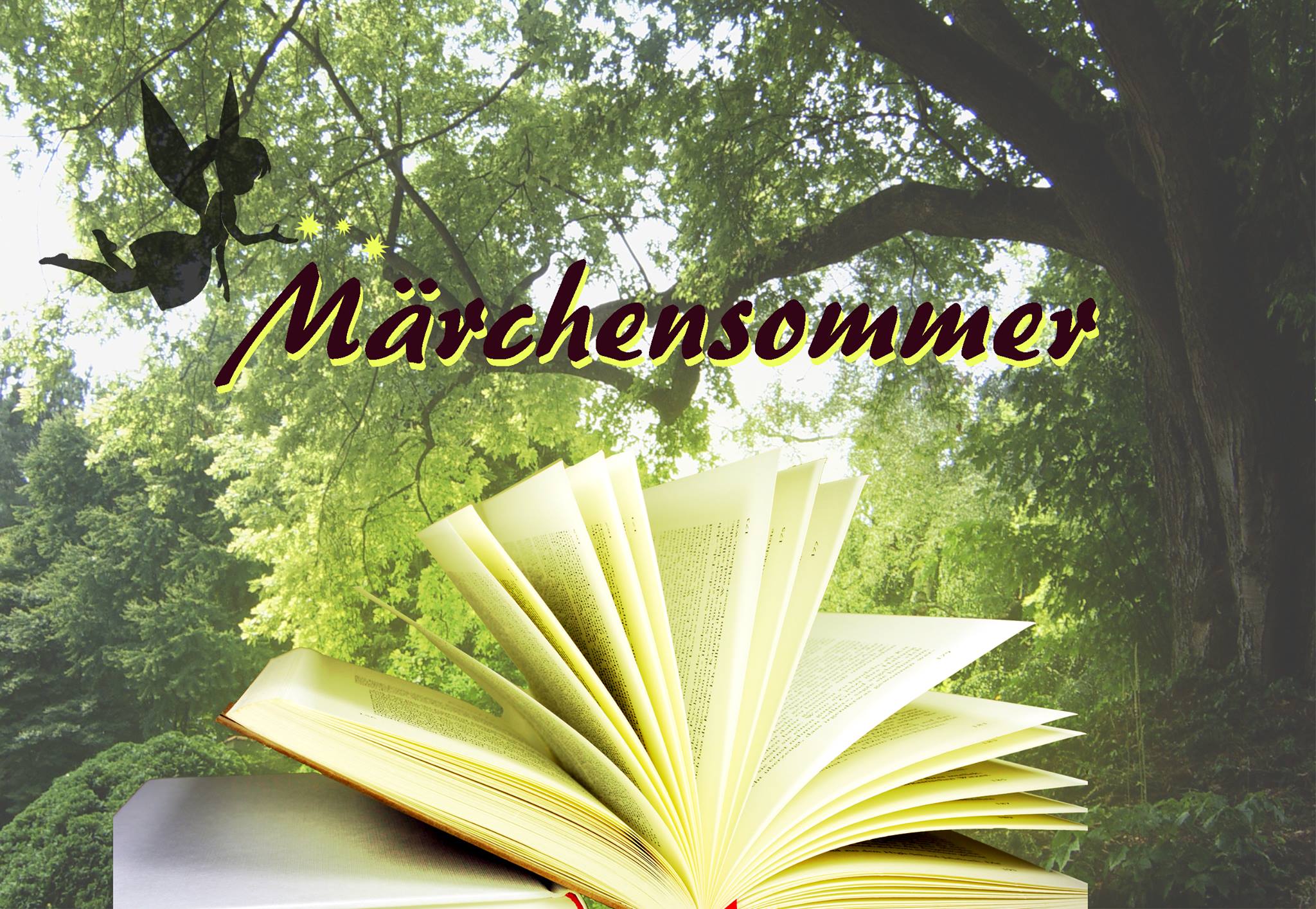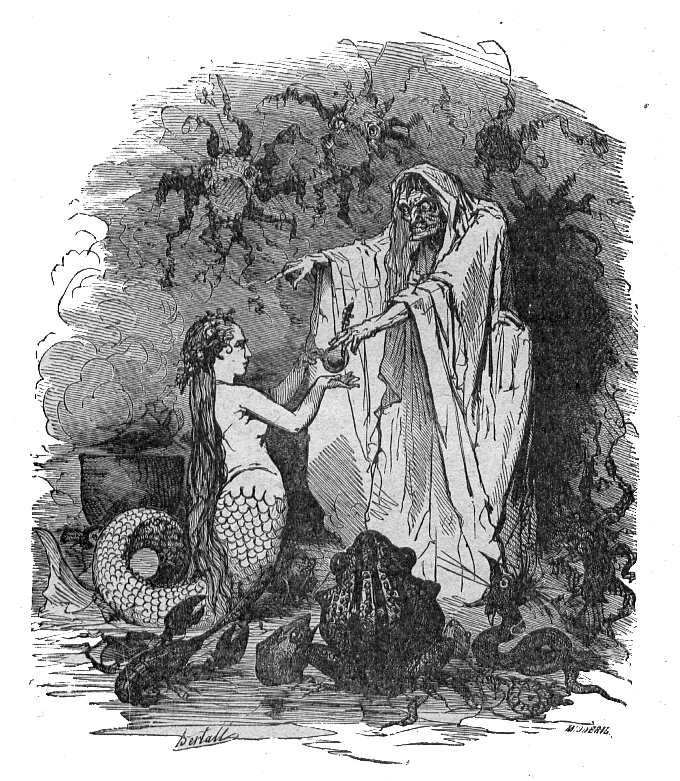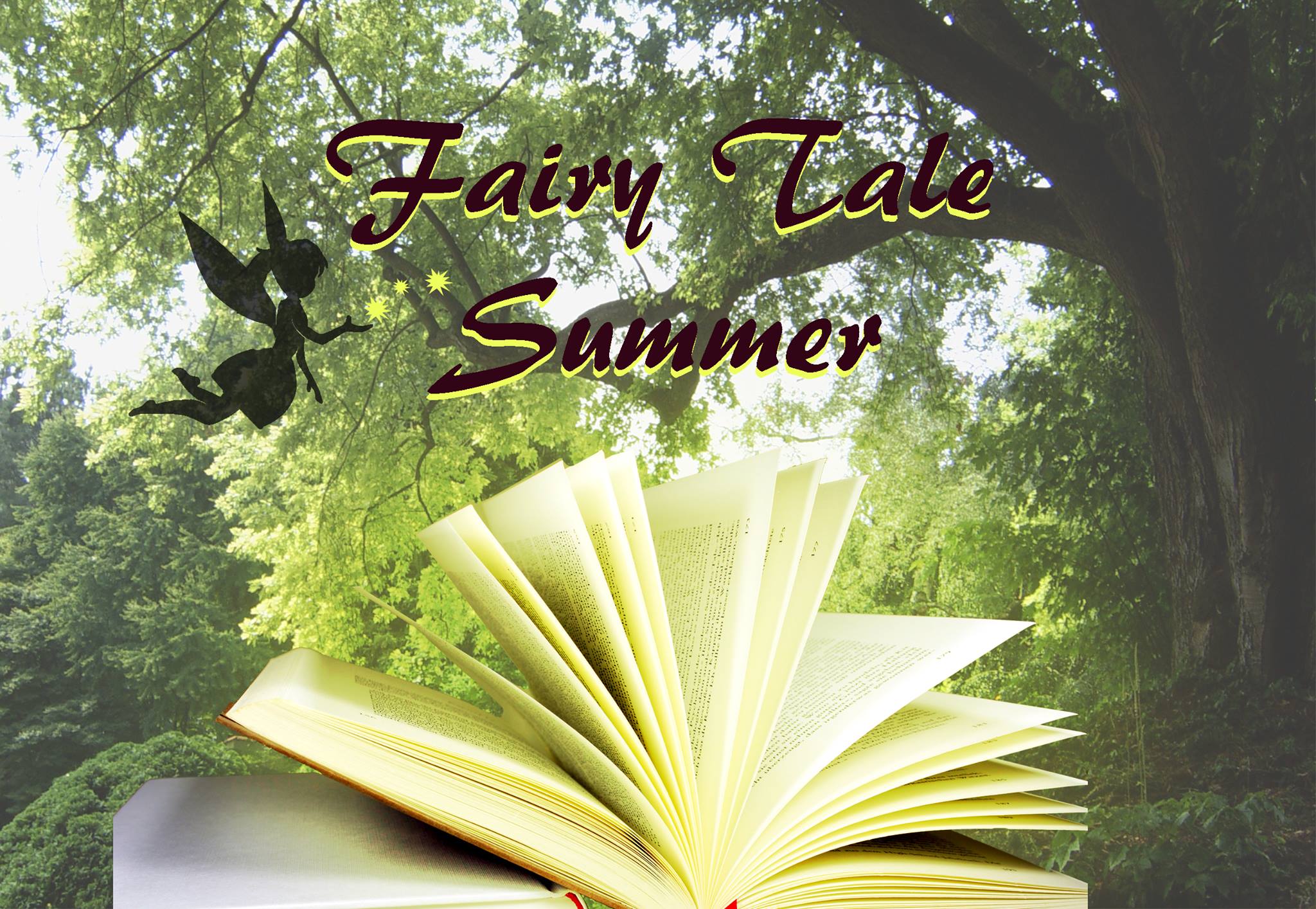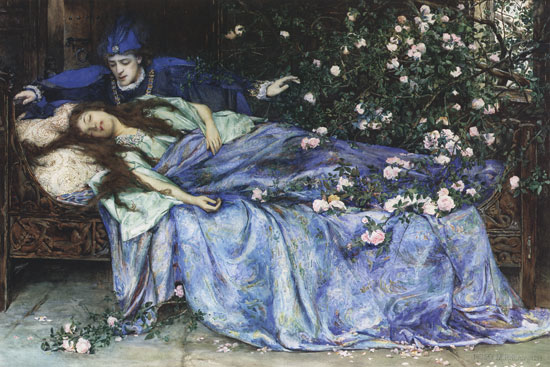Nachdem ich ihr im Fairy Tale Summer schon die Englischen Versionen von Teil 1 and Teil 2 hier lesen konntet, gibt es nun zum Abschluss auch noch einen Gastbeitrag von Sebastian „Sofian“ Wiedemeier in dem er sich noch ein drittes Mal mit den eigentlichen Enden (Deutscher) Märchen befasst hat. (Danke wieder an Cupric für die Übersetzungshilfe!)
Das eigentliche Ende (Deutscher) Märchen Teil 3
Im Rahmen des Märchensommers hat mich PoiSonPaiNter zwei Dinge gefragt: Zum Einen um die Erlaubnis, die ersten beiden Teile dieser ins Englische übersetzen zu dürfen, zum Anderen, ob ich mir nicht vorstellen könnte, einen neuen Gastbeitrag für ihre Aktion zu liefern. Und weil es bei dieser Aktion um Märchen geht, lasse ich mich natürlich nicht zweimal bitten und habe ja gesagt. Und was wäre hier passender, als die alten, staubigen Bücher ein weiteres Mal auszupacken und zu sehen, welche Obszönitäten, Absurditäten und Perversionen sich noch in den Ursprüngen der Märchenwelt verbergen.
Wie Kinder Schlachtens miteinander gespielt haben
Ein Märchen, von dem meines Wissens keine modernen Versionen existieren, ist die Geschichte „Wie Kinder Schlachtens miteinander gespielt haben„, denn es verschwand bereits aus der zweiten Auflage der „Kinder- und Hausmärchen“ der Grimms, weil es für Kinder nicht geeignet sei und zur Nachahmung anregen würde. Doch worum ging es in dem Märchen? Im Prinzip geht es um eine Gruppe Kinder, die ein kindlich- naives Rollenspiel spielen. Ich meine, jeder von uns hat sicherlich so Dinge wie „Vater, Mutter, Kind“ oder „Räuber und Gendarm“ in seiner Kindheit gespielt. Im besagten Kinderspiel teilen sich die Kinder verschiedene Rollen zu, wie sie zur Verarbeitung eines Schweins notwendig sind. So zum Beispiel der Schlachter, der das Schwein tötet, die Küchenmagd, die das Blut des Schweins mit einer Schale auffängt, um Würste damit zu kochen, den Koch und viele mehr. Selbstredend braucht man für ein solches Spiel auch ein Schwein und so schlüpft ebenfalls eines der Kinder in diese Rolle. Ich wette, einige von euch können das Ende hier bereits sehen, oder? Deshalb möchte ich es nur kurz zusammenfassen: Der „Schlachter“ schneidet dem „Schwein“ die Kehle durch und die Küchenmagd fängt das Blut in einer Schale auf. An dieser Stelle wird das Spiel von einem Erwachsenen, seines Zeichens Ratsherr, unterbrochen, der den „Schlachter“ festnimmt und den Rat zusammenruft. Dieser hat von einem solchen Fall noch nie gehört und weiß nicht, ob er das Kind verurteilen kann. Ein alter, weiser Richter hat da die Idee, dem Kind einen roten Apfel und einen Taler anzubieten. Wählt das Kind den Apfel, so ist das ein Beweis für ihre kindliche Naivität und es wird freigelassen, wählt es aber den Taler, hat es bereits die erwachsene Fähigkeit, abstrakte Wertkonstrukte zu verstehen und ist schuldig des Mordes, sodass es gehängt werden soll. Das Kind wählt den Apfel und geht fröhlich seiner Wege.
Es existiert bei diesem Märchen allerdings noch ein zweiter Teil, eine alternative Version. In dieser sieht ein Junge, wie der Vater ein Schwein schlachtet, und will dies nachspielen. Also nimmt es ein Messer, geht zu seinem Bruder und sagt ihm, dass dieser nun das Schwein sei, er selbst der Schlachter. Dann stößt er ihm das Messer in den Hals. Die Mutter der Jungen, die gerade im Haus ihr jüngstes Kind badet, hört den Schrei ihres Sohnes und stürmt hinaus. Als sie die Szene sieht, holt sie das Messer aus dem Hals ihres Kindes und ersticht damit in Rage ihr anderes Kind. Sie will danach nach ihrem dritten Kind sehen, das mittlerweile im Zuber ertrunken ist. Verzweifelt über den Verlust ihrer Kinder erhängt sie die Mutter danach. Der Vater, der am Abend nach Hause kommt und das Grauen sieht, stirbt kurz darauf als gebrochener Mann.
Über dieses Märchen wurde schon damals heftig gestritten. Die einen sagten, das Märchen würde Kinder davor warnen, es beim Spielen allzu ernst zu treiben und zu weit zu gehen, die anderen behaupteten, das gerade das durch diese Geschichte gefördert werden würde. Da diese Geschichte auch nicht entschärft werden konnte, wie es die Grimms mit vielen Märchen getan haben, wurde sie in der Zweitauflage der KHM ganz einfach weggelassen. Ob es durch das Erzählen dieser Geschichte tatsächlich zu Morden unter Kindern gekommen ist, lässt sich heute nicht mehr sagen, es ist aber, zugegebenermaßen, mehr als unwahrscheinlich.
Die kleine Meerjungfrau
Wenn es auch kein grimmsches Märchen ist, ja nicht einmal ein deutsches oder überhaupt ein echtes Märchen, so zeigt das Kunstmärchen „Die kleine Meerjungfrau“ von Hans Christian Andersen doch auf, wo und wie die Motive von Märchen mit der Zeit immer weiter vereinfacht, verharmlost und verkindlicht wurden. Die heute bekannte Disneyversion kennen vermutlich alle, dennoch möchte ich sie kurz der Vollständigkeit halber zusammenfassen. Die Meerjungfrau Arielle verliebt sich in einen Menschen und tauscht bei der Seehexe Ursula ihre Stimme gegen Beine. Sie muss innerhalb von drei Tagen einen Kuss vom Prinzen bekommen, sonst verliert sie auch noch ihre Seele. Es kommt zum Showdown und natürlich zum Happy End, in dem Arielle ihre Seele und Beine behält, ihre Stimme zurückerlangt und auch den Prinzen heiratet.
Die Motive und Sagen, derer sich Andersen hier bedient, sind aber sehr viel älter und zum Teil sehr viel brutaler. Die Figur der Arielle/der kleinen Meerjungfrau basiert auf der Sagengestalt der Undine, die im Laufe der Jahre vielfach literarisch verarbeitet wurde. Dabei spielt der Raub der Stimme meist eine zentrale Rolle- war die Undine doch nah verwandt mit den Sirenen und deshalb ein Urtypus der weiblichen Verführerin, die Männer von ihrer Tugendhaftigkeit abbrachte. Indem man ihr also die Stimme raubte, bevor sie unter den Menschen leben durfte, wurde diese Gefahr gebannt. Allerdings findet der Stimmenraub oft eher in Form des brutaleren Herausschneidens der Zunge statt. Doch auch, wenn die nun zungenlose Meerjungfrau nun unter den Menschen leben darf, ist ihr in den älteren Sagen kein Happy End beschieden. In einer Version fühlt sich für sie jeder Schritt an, als würde sie barfuss über Glasscherben laufen, in anderen Versionen dagegen heiratet der von ihr begehrte Prinz, mal ohne sie zu kennen, mal nach dem Erzeugen von Hoffnungen, eine andere Frau. Die nun von Grund auf depressive Meerjungfrau möchte zurück ins Meer, aber dieser Weg ist ihr verwehrt, denn dafür müsste sie ihren geliebten Prinzen töten. Dennoch versucht sie, zurück ins Meer zu gelangen, wobei sie sich in Schaum verwandelt und stirbt (in anderen ertrinkt sie einfach). Es existieren aber auch Versionen, in denen die Meerjungfrau schlicht und einfach Selbstmord begeht.
Im Gegensatz zu den Grimmschen Märchen fehlt hier so etwas wie eine übergeordnete Moral und da es sich um ein Kunstmärchen handelt, auch die in den grimmschen Märchen zu findenden, hauptsächlich sexuellen Sagenmotive, dennoch zeigt gerade die kleine Meerjungfrau, weil die Ursprünge hier klar sind, wie Märchen vereinfacht wurden. Hinzu kommt, das die zugrunde liegende Motive der Undinen in der ein oder anderen Version jedem bekannt ist- zählen doch auch zahlreiche Lokalsagen wie die Loreley und das Wiener Donauweibchen zu diesem Sagenkomplex.
Es waren einmal andere Märchen…
In meiner kleinen Serie habe ich euch nun bereits von Allerleirau, Rotkäppchen, Schneewittchen und Dornröschen erzählt, auch „Wie Kindern Schlachtens miteinander gespielt haben“ und das Andersen- Märchen von der kleinen Meerjungfrau. Allerdings könnte ich die Liste der Märchen beinahe endlos weiterführen. Manche sind auch bis heute kaum verändert worden, wie das Märchen „Frau Trude“, in dem ein ungehorsames Kind von der Hexe Trude in einen Holzklotz verwandelt und danach verheizt wird. Ebenfalls ein sehr beliebtes Motiv in der Kategorie der Märchen, die aufgrund ihrer Grausamkeit zum Teil nicht mehr weiter bearbeitet und verlegt wurden, ist der grausame, Frauen meuchelnde Ehemann, der in seinem Haus eine geheime Mordkammer hat. Dieses Motiv findet sich in dieser Form vor allem in den Märchen „Fitchers Vogel“ und dem bekannteren „Blaubart„. In beiden verbietet der Ehemann der Frau, eine bestimmte Kammer zu betreten, was diese natürlich dennoch tun und am Ende nur mit List, Glück und ihrer Verwandtschaft knapp dem Tod entgehen können. Noch weiter in seiner Grausamkeit geht das Märchen „Der Räuberbräutigamm„, in dem eine Frau die grausame Massenvergewaltigung und Ermordung einer anderen Frau mit ansehen muss, bei der es immerhin wild genug zugeht, um Körperteile durch die Gegend zu werfen.
Geschichten wie diese zeigen besonders eines: Märchen sind ursprünglich keine Kindergeschichten, erst die Grimmsche Bearbeitung hat sie zu diesen gemacht. Vielmehr sind sie meist Sagen, Geschichten und Schwänke, die mit der Zeit von vielen Erzählern immer mal mehr, mal weniger subjektiv verändert erzählt worden sind. Wie alle Geschichten verfolgen sie immer einen Zweck, der sich nicht immer auf den ersten Blick erschließt. Sie vermitteln Werte, Ansichten und zum Teil auch politische Gesinnung, zum Teil sollen sie sogar pauschal vor bestimmten Menschengruppen warnen oder diese gar diskreditieren (z.B. Juden im „Der Jude im Dorn„).
Märchen waren vieles, aber eines ganz sicher nicht: Reine Kinder- und Unterhaltungsgeschichten.
Der Autor
Sofian bloggt über das Schreiben und andere Sachen, die damit verbunden sind. Er hat außerdem ein wachses Auge für Märchen.
Ihr könnt ihr ihn auf seinem Blog: Sofians Kreativstube, auf Facebook: Kreativschreibstube und Twitter: @Sofian_KSS
PoiSonPaiNter
_________________________________
After you got the English Versions of Part 1 and Part 2 during the Fairy Tale Summer you’ll get as conclusion a a guest post by Sebastian „Sofian“ Wiedemeier where he looked at the true ending of (German) Fairy Tales for the third time. (Thanks again to Cupric for helping out with the translation!)
The True Ending of Fairy Tales – Part 3
The first thing to notice when you engage in Fairy Tales is that they’re originally not meant to be instructional stories for children. They were stories told by adults, often bloodier and more gruesome than today’s horror movies. The Brothers Grimm were the first to rewrite them for their second collection into more child-friendly versions. Hence I’d like to tell you in this first part two endings of Fairy Tales as they were told by the Brothers Grimm.
Wie Kinder Schlachtens miteinander gespielt haben (How Some Children Played at Slaughtering)
A Fairy Tale without a modern version as far as I know is the story ‚How Some Children Played at Slaughtering‚, because it had already vanished from the second edition of Grimm’s Children’s and Household Tales because it wouldn’t be suitable for children and encourage imitation. But what was the Fairy Tale about? The basic story-line is about children playing childish-naive make-believe role play. I mean, every one of us is surely bound to have played games such as house or cops and robbers in their youth.
In this game the children take up roles that are necessary to handle the slaughter of a pig. For example a butcher who kills the pig, a kitchenmaid to catch its blood in a basin to process it into blood sausages, the cook and many more. Naturally you’ll need a pig for this game as well and so one child gets assigned that particular role. I bet some of you already know which turn this game will take, don’t you? Thus I’ll keep it short: The ‚butcher‘ slits the ‚pig’s‘ throat while the kitchenmaid catches its blood in a basin. At this point the game gets interrupted by an adult, councilman by profession, who detains the ‚butcher‘ and calls for the council. Said council had never heard of such a case and can’t decide whether they can convict the child. An old and wise judge hits on the idea to offer said child an apple and a coin. If the child chooses the apple it’s to be viewed as a sign of child-like naiveté and the child to be let free, but if it chooses the coin instead this means it’s already able to grasp adult-like value judgement and is thus guilty of murder and to be hanged. The child picks the apple and happily goes its way.
But there is another, alternative version of this Fairy Tale as well. Here a boy sees how his father slaughters a pig and wants to re-enact it. So he takes a knife, goes up to his brother and declares him to be the pig and himself to be the butcher. Then he thrusts the knife into his brother’s throat. The boys‘ mother, who is bathing her youngest child in the house, hears her son’s scream and rushes out. Taking in the scene she pulls the knife out of her child’s throat to stab her other son to death in her rage. She wants to look after her third child and finds it drowned in the tub. Fallen into despair over the loss of her children she hangs herself afterwards. The father, coming home in the evening, sees the horror and dies as a broken man shortly after.
This Fairy Tale sparked controversy back then as well. Some said this Fairy Tale would warn children not to take playing too seriously, others argued that it would promote exactly that. As this story isn’t that easily softened as the Brothers Grimm did with countless other Fairy Tales it was simply dropped from the second edition of the Children’s and Household Tales. Whether the narration of this story really promoted murder among children can’t be assessed nowadays but it is, admittedly, doubtful.
Die kleine Meerjungfrau (The Little Mermaid)
Even though it’s not a Tale by the Brothers Grimm, actually not even German or a real Fairy Tale, this literary Fairy Tale ‚The Little Mermaid‚ by Hans Christian Andersen still showcases where and how motives of Tales got simplified, downplayed and made suitable for children as time went on. The modern Disney version is most likely known by nearly everyone but I’ll briefly summarize for the sake of completeness: Mermaid Arielle falls in love with a human and gets her voice traded for legs by the sea witch Ursula. She has to get a kiss from the prince within three days or she’ll lose her soul as well. Naturally this leads to a showdown und finally a happy ending in which Arielle keeps her Soul and legs, regains her voice and marries the prince.
The motives and legends herein used by Andersen are way older and to some extend beastlier. The figure of Arielle/the little mermaid is based off the mythical creature named Undine which had been literary processed quite frequently over the years. Taking its voice often held a vital part as the Undine’s closely related with Sirens and thus an original type of seductress taking a man’s virtue. So taking her voice before she was allowed to live among humans ensured their safety. However it was mostly implemented by the brutal way of cutting out the tongue. Still, even though the tongueless mermaid’s now allowed to live among humans she wasn’t allotted for a happy ending in the older versions. In one of those every step hurt her as if walking over shattered glass, in another the desired prince marries – sometimes not even knowing her, sometimes raising her hopes – a different woman. The fundamentally depressive mermaid wants to return to the sea but that path’s blocked because she would have to kill her beloved prince to do so. She tries to go back into the sea anyway resulting in her changing into foam and dying (in other versions she simply drowns). There are some, too, in which she simply commits suicide.
In contrast to Tales by the Brothers Grimm there is no higher moral standard and as it’s a literary Fairy Tale the mainly sexually oriented motives that are usually found in Grimm’s Tales are missing as well. Still, The Little Mermaid excellently showcases how Fairy Tales got simplified as its origin is quite distinct. There is also the fact that the underlying motives of the Undine is known to everybody in one version or another – even local myths like Loreley and the ‚Wiener Donauweibchen‘ count towards this cluster of legends.
Once upon a time there were other Fairy Tales…
In my little series I already told you about All-kinds-of-fur, Little Red Riding Hood, Snow White and Sleeping Beauty, also about „How Some Children Played at Slaughtering“ and the Andersen-Fairy Tale about the Little Mermaid. Admittedly I could continue this list of Fairy Tales nearly endlessly. Some of them are even barely changed to this day, like the Fairy Tale „Frau Trude (Mother Trudy)„, in which a disobedient child is turned into a log and burned by Mother Trudy. Another much loved motive in the category of Fairy Tale, which aren’t being edited or published any more due to their cruelty, is the wife murdering husband that has a secret murder-chamber in his house. The motive can be found in this for especially in the Fairy Tale „Fitcher’s Bird“ and the better known „Bluebeard„. In both of them the husband forbids his wife to enter a certain chamber, what she does regadless and in the end only manages to barely escape death with cunning, luck and her relatives. Even further into this cruelty goes the Fairy Tale „The Robber Bridegroom„, in which the woman has to witness the cruel mass-rape and slaughter of another women, in which things are that wild that limbs fly across the room.
Stories like these particularly show one thing: Fairy Tales are originally no children’s tales, only the editing of the Grimms turned them into that. Rather they’re legends, tales or droll stories, that with time got told by many story tellers sometimes more, sometimes less subjectively changed. As many stories are they following one purpose, that isn’t quite clear at first glance. They convey values, opinions and partly also political disposition, partly they are even supposed to overall warn about certain groups of people or even discredit them (e.g. Jews in „Der Jude im Dorn“ – The Jew in the Thorns).
Fairy Tales are many things, but one thing certainly not: Pure children and entertainment stories.
The author
Sofian blogs about writing and other things that come along with it. He also has a keen eye for Fairy Tales.
You can find him on his Blog: Sofians Kreativstube, on Facebook: Kreativschreibstube and Twitter: @Sofian_DiB
PoiSonPaiNter







